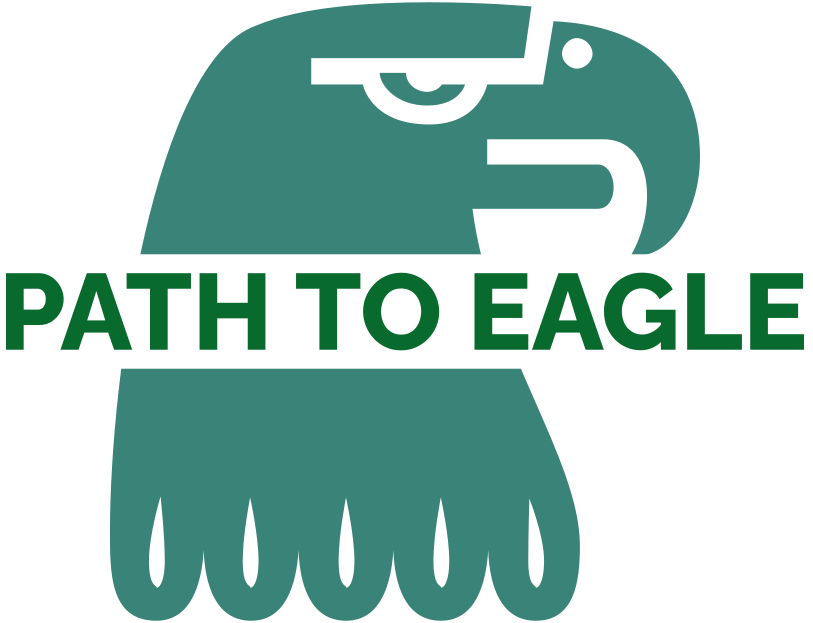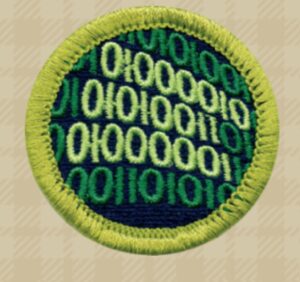The Programming Merit Badge is a great way for Scouts to explore the world of software development, coding, and computer science. Whether you’re already into coding or just starting out, this badge introduces you to real-world programming tools, tech safety, and even potential careers.
In this guide, we’ll walk through each requirement, explain key concepts, and offer tips and examples to help you complete the badge successfully.
Requirement 1: Safety First
1a.
View the Personal Safety Awareness “Digital Safety” video.
Before beginning, Scouts must (with parent/guardian permission) watch the BSA Digital Safety video. This covers how to stay safe online, avoid scams, protect your information, and act responsibly in digital spaces.
This is a good opportunity to talk with your parent about your computer habits and set family safety rules if you don’t already have them.
1b.
Discuss first aid and prevention for injuries that can occur during programming.
Even though coding seems low-risk, long hours at a computer can lead to:
- Repetitive Stress Injuries (RSI): Caused by typing or using a mouse for long periods. Prevention: take breaks, stretch, use ergonomic equipment.
- Eyestrain: Caused by looking at screens for too long. Prevention: follow the 20-20-20 rule—every 20 minutes, look at something 20 feet away for 20 seconds.
- Poor posture: Use a proper chair and desk setup, sit up straight, and keep your monitor at eye level.
Requirement 2: History of Programming
Discuss the history of programming and at least three milestones.
Key Milestones:
- 1940s – Early Computers: Programming began with machines like the ENIAC, which used punch cards and switches.
- 1957 – FORTRAN: One of the first high-level languages, designed for scientific computing.
- 1995 – Java: Introduced platform-independent programming, meaning “write once, run anywhere.”
You can also mention the development of modern languages like Python or JavaScript and the rise of mobile and web apps.
Requirement 3: General Programming Knowledge
3a.
List five popular programming languages and where they’re used.
| Language | Common Uses |
|---|---|
| Python | Web development, AI, data science |
| Java | Android apps, enterprise systems |
| JavaScript | Web development (frontend and backend) |
| C++ | Game development, systems software |
| SQL | Databases, data analysis |
Each language has its strengths depending on the industry’s needs, platform, and performance requirements.
3b.
Describe three programmed devices you use daily.
Examples:
- Smartphone: Runs multiple apps written in languages like Java, Kotlin, or Swift.
- Laptop/PC: Uses operating systems and apps programmed in various languages.
- Smart thermostat: Uses embedded code to track temperature and adjust settings.
Everything from alarm clocks to cars now runs on software—programming is everywhere.
Requirement 4: Intellectual Property and Software Use
4a.
Explain the four types of intellectual property used to protect computer programs.
- Copyright – Protects the expression of original code.
- Patent – Protects new inventions or processes.
- Trademark – Protects names, logos, or slogans.
- Trade Secret – Protects proprietary code or formulas (like Google’s search algorithm).
4b.
Describe the difference between licensing and owning software.
- Owning software is rare; you typically only own it if you created it yourself.
- Licensing software means you’re given permission to use it under specific conditions (like a monthly subscription or limited install rights).
4c.
Describe freeware, open-source, and commercial software.
- Freeware: Free to use, but not always free to modify or redistribute.
- Open-source: Free to use and modify, often shared on platforms like GitHub.
- Commercial: Paid software, usually protected and limited in how you can use or share it.
Respecting software licenses is important for staying legal and ethical in programming.
Requirement 5: Programming Projects
Select three different programming languages and environments. For each, write or modify a program, debug it, and explain how it works.
You’ll need to:
- Take input from the user
- Make a decision based on that input
- Show output after computation
Example Projects:
5a. Python (IDLE or Replit)
- Program: Ask the user for their age, then print whether they are old enough to drive.
- Example:
age = int(input("Enter your age: "))
if age >= 16:
print("You can drive!")
else:
print("You need to wait a bit longer.")
5b. JavaScript (Browser Console or Replit)
- Program: Ask for a number and check if it’s even or odd.
- Example:
let num = prompt("Enter a number:");
if (num % 2 === 0) {
alert("That's an even number!");
} else {
alert("That's an odd number!");
}
5c. Scratch (block-based)
- Create a program where the user presses a key and the sprite moves, then responds based on the direction.
Make sure you demonstrate your programs and explain how input is taken, how the code makes decisions, and what output is displayed.
Requirement 6: Careers in Programming
Find three careers related to programming. Pick one to research in detail.
Career Options:
- Software Developer – Creates apps and systems for all types of industries.
- Cybersecurity Analyst – Protects systems from digital threats.
- Game Developer – Builds video games using programming engines.
Sample Focus: Software Developer
- Education: Bachelor’s degree in computer science or software engineering
- Skills: Proficiency in languages like Python, Java, or C++
- Experience: Internships, personal projects, open-source contributions
- Cost: College tuition varies by school, often $10,000–$40,000/year
- Salary: Average starting salary around $60,000–80,000; experienced developers can earn over $120,000
- Outlook: High demand in nearly every industry
This field offers flexibility, high pay, and the chance to solve real-world problems—perfect for tech-minded Scouts.
Final Thoughts
The Programming Merit Badge is a hands-on, practical badge that introduces Scouts to one of the most in-demand skills in today’s world. Whether you build simple scripts or dream of designing video games, this badge is a great way to begin your coding journey.
Don’t worry if you’re just getting started—every great programmer began with a simple “Hello, world!” Keep experimenting, keep learning, and most of all, have fun.



